 If any number of quantities are proportional, any antecedent is to its consequent as the sum of all the antecedents is to the sum of all the consequents. Let a : b = c : d = e :f Now ab = ab (1) and by Theorem I. If any number of quantities are proportional, any antecedent is to its consequent as the sum of all the antecedents is to the sum of all the consequents. Let a : b = c : d = e :f Now ab = ab (1) and by Theorem I.  A Treatise on Algebra - Page 220by Elias Loomis - 1879 - 384 pagesFull view A Treatise on Algebra - Page 220by Elias Loomis - 1879 - 384 pagesFull view - About this book
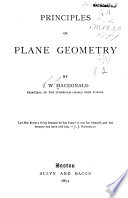 | James Wallace MacDonald - Geometry - 1894 - 76 pages
...powers or like roots are in proportion. Proposition XI. A Theorem. 127. In a series of equal ratios the sum of all the antecedents is to the sum of all the consequents as any one antecedent is to its consequent. COROLLARY. The sura of any number of the antecedents is... | |
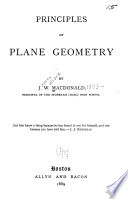 | James Wallace MacDonald - Geometry - 1889 - 80 pages
...consequents. Proposition X. A Theorem. Proposition XI. A Theorem. 127. In a series of equal ratios the sum of all the antecedents is to the sum of all the consequents as any one antecedent is to its consequent. COROLLARY. The sum of any number of the antecedents is... | |
 | Charles Davies - Algebra - 1889 - 330 pages
...+ d+f+h+ &c. _ b Ac. a •/ Honce, the following principle : 10. In any continued proportion, tlie sum of all the antecedents is to the sum of all the consequents, as any antecedent is to the corresponding consequent. Let us assume the two equations, bd . fh - =... | |
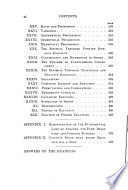 | Webster Wells - Algebra - 1890 - 560 pages
...?Lh»i±* a — bc — d Whence, a + b: a — b = c + d: c — d. 390. In a series of equal ratios, any antecedent is to its consequent as the sum of all...antecedents is to the sum of all the consequents. Let a:b = c:d = e:f. Then by Art. 381, ad = be, and af= be. Also, ab = ba. Adding, a(b + d +/) = b(a +... | |
 | Joseph Ray - Algebra - 1894 - 422 pages
...: 135 : : 8 : 72. 278. Propositioa XII. — In any number of proportions having the same ratio, any antecedent is to its consequent as the sum of all...antecedents is to the sum of all the consequents. Let a : b : : С : d : : m : n, etc. Then, a : b : : a+c+wi : o+ d+n. Since a : b : : с : d, we have be—... | |
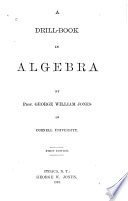 | George William Jones - Algebra - 1892 - 300 pages
...and like roots of the terms of a proportion are proportional. THEOR. 9. In a continued proportion, the sum of all the antecedents is to the sum of all the consequents as any antecedent is to its consequent. For, let a : b - с : d= e :/= - - then va/a = b/b, с/а -... | |
 | Webster Wells - Geometry - 1894 - 400 pages
...the second, we have a -f- bc -\- d PROPOSITION VIII. THEOREM. 239. In a series of equal ratios, any antecedent is to its consequent as the sum of all...antecedents is to the sum of all the consequents. . Let a :b = c : d = e :f. To prove a:b=a+c+e:b+d+f. Let r denote the value of each of the given ratios.... | |
 | University of the State of New York. Examination dept - Examinations - 1895 - 436 pages
...imaginary. 6-7 Complete and prove the following theorem : if any number of quantities are in proportion the sum of all the antecedents is to the sum of all the consequents as ... 8-9 Write three terms of the expansion of [a -\- b~\ n and prove that it is true when n is any... | |
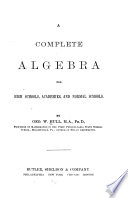 | George Washington Hull - Algebra - 1895 - 358 pages
...nq Multiplying, $P--JJ26n dq Whence, am :bn = cp: dq. THEOREM XVI. In a series of equal ratios, (he sum of all the antecedents is to the sum of all the consequents as any antecedent is to its consequent. Let a : 6 = с : d, And m:n=p:q. Then а с t Ь d' And ™=£.... | |
 | Webster Wells - Algebra - 1897 - 522 pages
...(I) by (2), —b = ~dWhence, a + b: a — o = c + d:c — d. 315. In a series of equal ratios, any antecedent is to its consequent as the sum of all...antecedents is to the sum of all the consequents. Let a: b = c:d = e:f. Then by § 306, ad = be, and af= be. Also, ab = ba. Adding, a (b + d +f) = b(a +... | |
| |